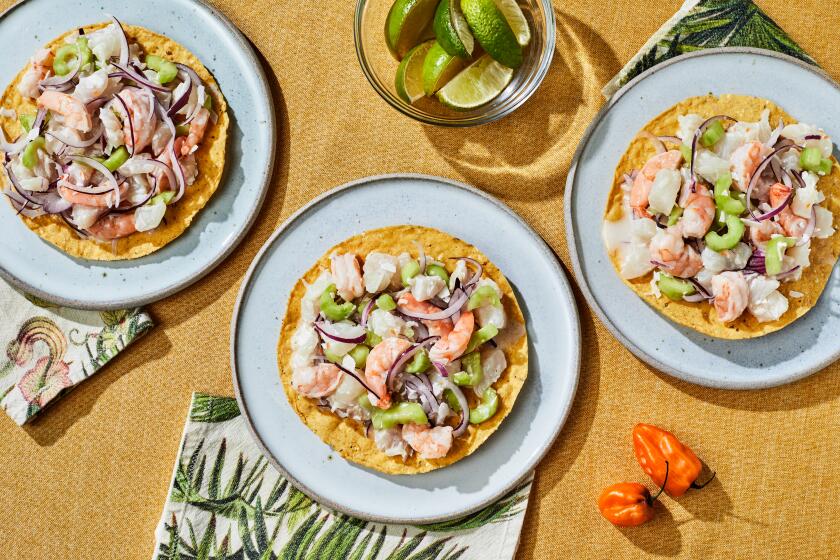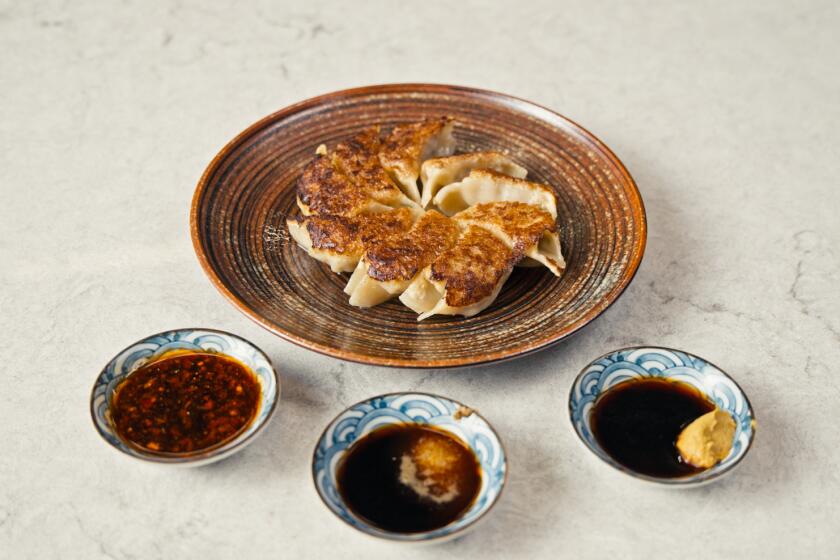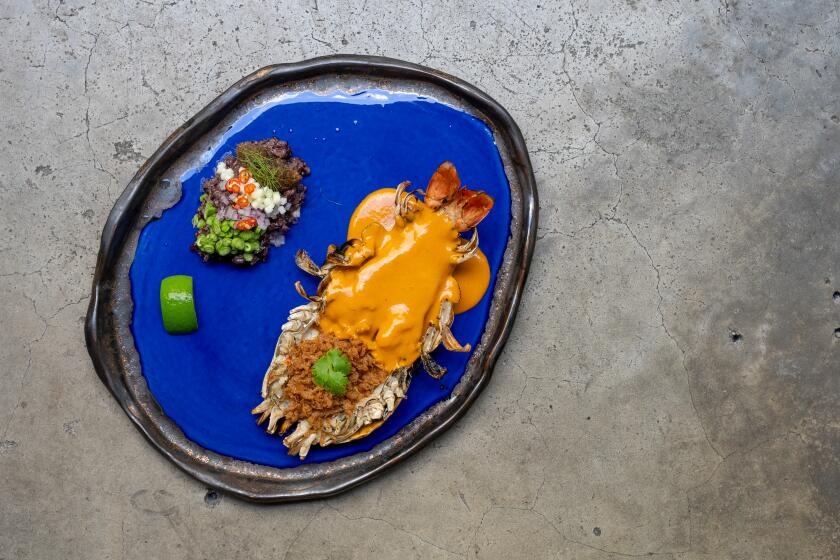Lumpia Shanghai

When Grace Talusan cooks for a party, the dish she makes is adobo . This vinegar-and soy sauce-seasoned stew, often called the national dish of the Philippines, is the centerpiece of a menu Talusan suggests for Philippine independence day Tuesday.
On that date in 1898, Gen. Emilio Aguinaldo declared independence from Spain, which had governed the islands for more than 300 years. Spain ceded the Philippines to the United States, which granted independence again on July 4, 1946. That makes two political holidays in less than a month.
However, party-loving Filipinos don’t need an excuse to celebrate. Talusan’s menu suits any summer day because it ends with an icy dessert, halo-halo . And it includes a tall, cool drink made with avocados. Although thought of as a salad or guacamole ingredient in the United States, the avocado is treated as a fruit in the Philippines. There it is turned into ice cream, spooned into a bowl with milk and sugar or pureed into a sort of avocado shake.
Other warm weather drinks are made with mango or cantaloupe. “These drinks are almost like desserts in themselves,” says Talusan, who was born in Manila and now lives in Los Angeles. “We may eat them with the food, but a lot of times, just have them after the meal as a dessert/drink.”
Talusan teaches creative writing at the University of Oregon in Eugene and is finishing a novel that will include “a lot of food stuff.” Adobo has almost as many variations as there are cooks, she says. The basics are vinegar, soy sauce and garlic. The meat can be pork, chicken or a combination of both.
“To make it vegetarian, use quartered potatoes, carrots, greens, other root vegetables,” she says.
What makes Talusan’s adobo different is how spicy it is. She likes to add jalapeno or Thai chiles in addition to black pepper. Coconut milk mellows the flavor. Her cooking technique is also unique and results in meat that is soft and tender.
Talusan marinates chicken overnight--an unusual step with adobo --then grills it or sears it in a hot skillet with a little oil. The idea is to extract fat and make the skin slightly crisp. Then she stews it. “The meat falls off the bones if you let it simmer on low heat for a long time,” she says, “but my father says the ‘real’ adobo is only boiled until done, and the meat stays firm.” That’s how cooks disagree when discussing adobo .
There are regional differences too. Some regions prefer a rather dry adobo; Talusan’s is soupy. “We eat this dish with white rice, usually, as it cuts the strong taste,” she says. She also serves greens such as baby bok choy sauteed in olive oil with a little garlic. The vegetables should be somewhat bland, she says, “so that the overall meal isn’t too salty.”
For a party, Talusan would start with lumpia --fried egg rolls--made the way her mother, Arcel Talusan of Boston, taught her. The filling is pork, water chestnuts and green onions, and the dip is Philippine banana sauce, a fruity red mixture that comes either mild or spicy. It’s important to use wrappers specially designated for lumpia, because they’re thinner than ordinary egg roll wrappers.
Talusan herself mixed halo-halo in the Times Test Kitchen. First she spooned a generous mound of crushed ice into a glass bowl, then scattered halo-halo mix over the top. Philippine markets sell jars of the different components of halo-halo , including assorted beans in syrup, coconut gel, macapuno , buko and palm seeds. For convenience, premixed ingredients are packed in a single jar, although the variety will be limited.
Next she poured canned milk over the mixture and finished it with a scoop of brilliant purple ube ice cream. Ube is a purple yam used in the Philippines for cakes, ice cream and a sweet paste that is sometimes added to halo-halo . The ice cream is produced in the United States for Magnolia, a brand popular in the Philippines.
Fancy versions of halo-halo might have more additions, such as flan, creamed corn, jackfruit and pinipig , a crunchy topping that resembles crisp rice cereal. The dessert is so popular that some parties are designed around halo-halo buffets elaborate enough to require renting an industrial-strength ice shaver.
A well-heaped halo halo can look enormous, but quickly melts down to manageable size. “It’s mostly the ice,” Talusan says. “You can’t eat a lot of it.”
To make Talusan’s version, for one serving, place one-half cup of crushed ice in the bottom of a serving bowl. Spoon one-third cup premixed halo-halo over the ice, then pour two tablespoons of evaporated milk over the top. Top with one-fourth cup of ice cream.
Combine the pork, yellow onion, green onions, diced water chestnuts and egg in a bowl. Season with a little salt or soy sauce.
Starting with 1 wrapper, place about 2 tablespoons of the pork filling down the center of the wrapper in a “log” shape, about 1 inch from the edges. Start rolling the wrapper up from the short end, then fold in the sides and finish rolling. Repeat with the remaining wrappers until all the filling has been used up.
Heat 1 inch of oil in a deep skillet over medium-low heat and fry the egg rolls, in batches if necessary, until golden brown, about 8 to 10 minutes.
Get our Cooking newsletter.
Your roundup of inspiring recipes and kitchen tricks.
You may occasionally receive promotional content from the Los Angeles Times.















